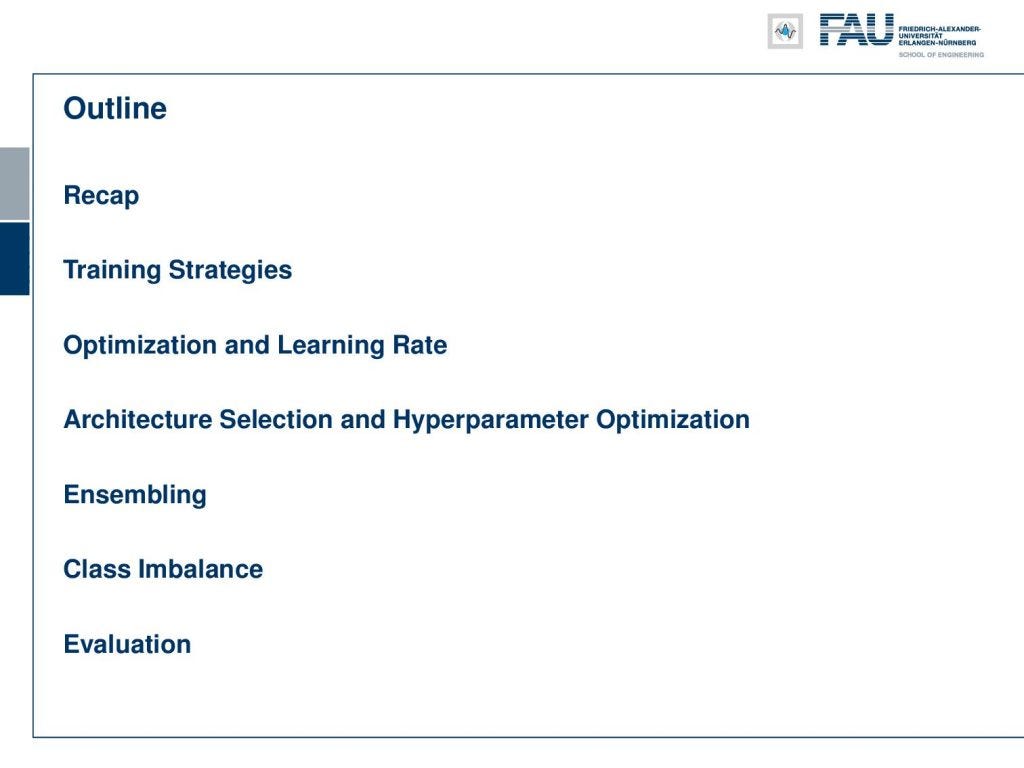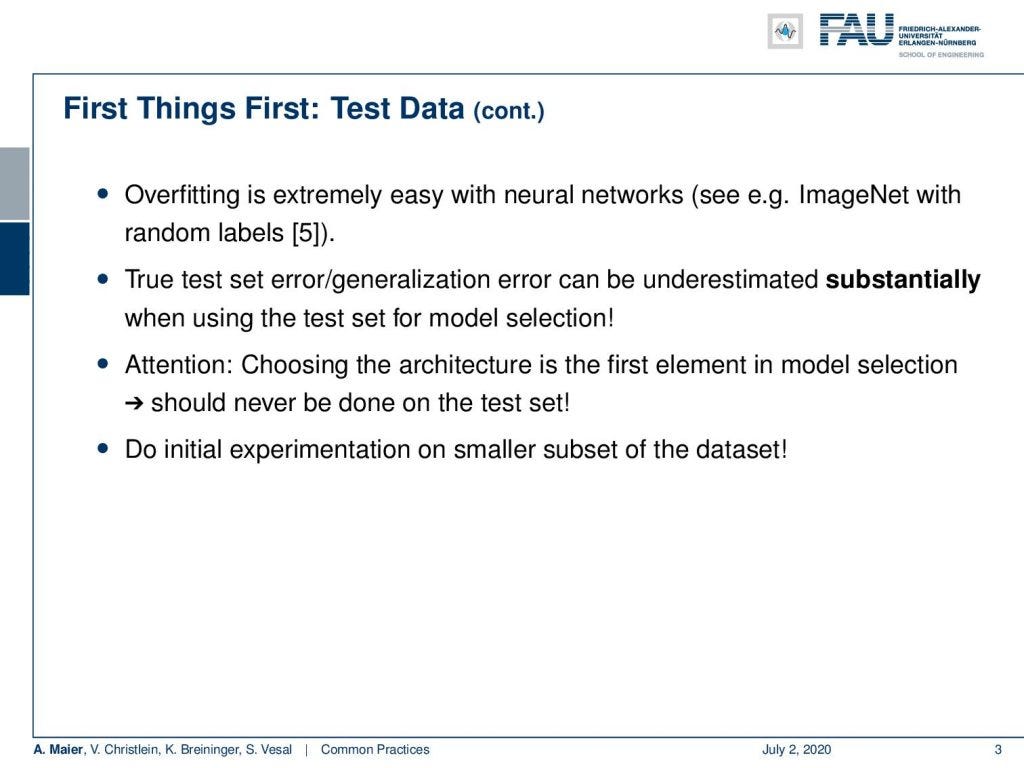These are the lecture notes for FAU’s YouTube Lecture “Deep Learning”. This is a full transcript of the lecture video & matching slides. We hope, you enjoy this as much as the videos. Of course, this transcript was created with deep learning techniques largely automatically and only minor manual modifications were performed. If you spot mistakes, please let us know!
Navigation
Previous Lecture** / Watch this Video / Top Level / **Next LectureWelcome everybody to today’s deep learning lecture! Today, we want to talk a bit about common practices. The stuff that you need to know to get everything implemented in practice,

Overview on the next couple of lectures. Image under CC BY 4.0 from the Deep Learning Lecture.
So, I have a small outline over the next couple of videos and the topics that we will look at. So, we will think about the problems that we currently have and how far we went. We will talk about training strategies, again optimization and learning rates, and a couple of tricks on how to adjust them, architecture selection, and hyperparameter optimization. One trick that is really useful is ensembling. Typically people have to deal with the class imbalance and of course, there are also very interesting approaches to deal with this. So finally, we look into the evaluation and how to get a good predictor. We also estimate how well our network is actually performing.

Recap of neural network training. Image under CC BY 4.0 from the Deep Learning Lecture.
So far, we have seen all the nuts and bolts of how to train the network. We have to fully connected and convolutional layers, the activation function, the loss function, optimization, regularization, and today we will talk about how to choose the architecture, train, and evaluate a deep neural network.

The test data will be looked at only after we set all the other important choices about our training process. Image under CC BY 4.0 from the Deep Learning Lecture.
The very first thing is testing. “Ideally, the test data should be kept in a vault and be brought only out at the end of the data analysis.” as Hastie and colleagues are teaching in the elements of statistical learning.

Overfitting neural networks can be performed easily. Therefore, we have to perform many choices with care. Image under CC BY 4.0 from the [Deep Learning Lecture]
So, first things first: Overfitting is extremely easy with neural networks. Remember the ImageNet random labels. The true test set error and generalization can be underestimated substantially when you use the test set for model selection. So, when we choose the architecture — typically the first element in the model selection — this should never be done on the test set. We can do initial experimentation on a smaller subset of the data to try to figure out what works. Never work on the test set when you’re doing these things.
#deep-learning #data-science #machine-learning #deep learning
